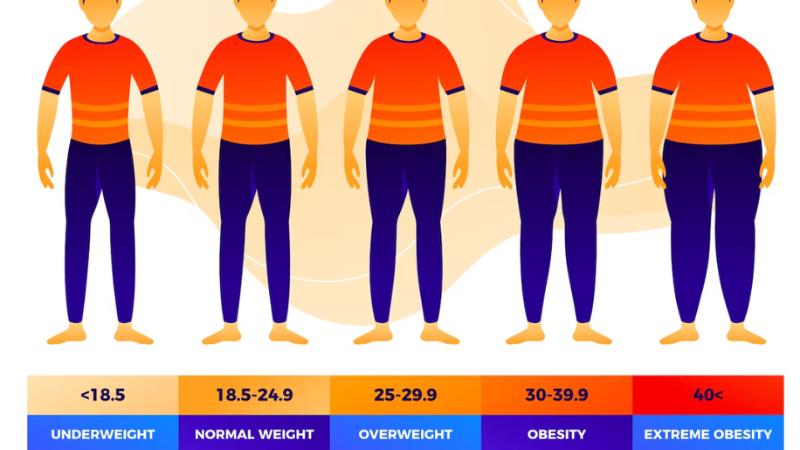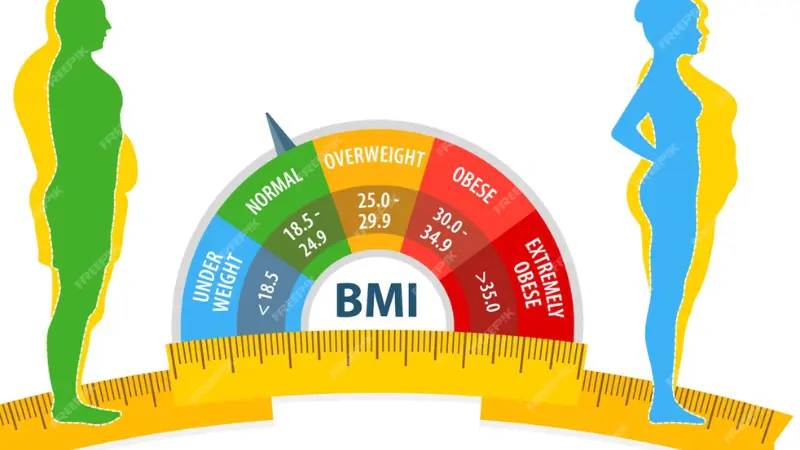Introduction
If you’ve calculated your BMI and wondered what the number really means — you’re not alone! BMI (Body Mass Index) categories help you interpret your results by placing your number in a range that reflects your health risk. Understanding these categories is crucial for making informed decisions about your health and wellness journey.
In this comprehensive article, we explain the BMI categories: underweight, normal, overweight, and obese, how they’re determined, and what they mean for your overall health. We’ll also explore the nuances, limitations, and practical applications of these classifications to help you better understand your BMI results.
Table of Contents
What Are BMI Categories?
BMI categories classify people based on their BMI score, which is calculated from weight and height using a standardized formula. These categories were developed by health organizations worldwide to provide a simple screening tool for identifying potential weight-related health risks.
The World Health Organization (WHO) established these standard BMI categories ranges based on extensive research linking body weight to health outcomes:
| Category | BMI Range |
|---|---|
| Underweight | Less than 18.5 |
| Normal weight | 18.5 – 24.9 |
| Overweight | 25 – 29.9 |
| Obese | 30 and above |
These ranges are standard for adults aged 18 and over and serve as a starting point for health assessments. However, it’s important to note that BMI is just one tool among many used to evaluate health status.
Detailed Analysis of Each BMI Categories
Underweight (BMI Below 18.5)
A BMI below 18.5 suggests you’re underweight, which can be just as concerning as being overweight. Being underweight may indicate insufficient nutrition or underlying health conditions that require attention.
Potential health risks of being underweight include:
- Nutritional deficiencies – Inadequate intake of essential vitamins, minerals, and macronutrients
- Weakened immune system – Reduced ability to fight off infections and illnesses
- Fertility issues – Hormonal imbalances that can affect reproductive health
- Decreased muscle mass – Loss of muscle strength and bone density
- Delayed wound healing – Slower recovery from injuries or surgeries
- Increased risk of osteoporosis – Weakened bones due to inadequate nutrition
Common causes of being underweight:
- Genetics and naturally high metabolism
- Chronic illnesses or medical conditions
- Eating disorders or poor appetite
- Stress, anxiety, or depression
- Excessive physical activity without adequate nutrition
If you fall into this category, it’s advisable to consult with a healthcare provider to determine the underlying cause and develop a healthy weight gain plan.

Normal Weight (BMI 18.5-24.9)
A BMI between 18.5 and 24.9 means you’re at a healthy weight for your height — associated with the lowest risk of chronic diseases. This range is considered optimal for most adults and is linked to better overall health outcomes.
Benefits of maintaining a normal BMI:
- Reduced cardiovascular risk – Lower chances of heart disease and stroke
- Better insulin sensitivity – Reduced risk of type 2 diabetes
- Optimal hormone balance – Better reproductive and metabolic health
- Improved energy levels – More efficient body function
- Enhanced mobility – Less strain on joints and muscles
- Better sleep quality – Reduced risk of sleep apnea and other sleep disorders
Maintaining a normal BMI involves:
- Regular physical activity (150 minutes of moderate exercise weekly)
- Balanced nutrition with adequate portions
- Consistent sleep patterns
- Stress management techniques
- Regular health check-ups
Even within the normal range, it’s important to focus on overall health rather than just the number on the scale.
Overweight (BMI 25-29.9)
A BMI of 25–29.9 suggests excess weight that may increase your risk of developing various health conditions. This category serves as a warning sign that lifestyle changes may be beneficial to prevent progression to obesity.
Health risks associated with being overweight:
- High blood pressure (hypertension) – Increased strain on the cardiovascular system
- Heart disease – Elevated risk of coronary artery disease and heart attacks
- Type 2 diabetes – Insulin resistance and blood sugar management issues
- Sleep apnea – Breathing difficulties during sleep
- Gallbladder disease – Increased risk of gallstones
- Certain cancers – Higher risk of breast, colon, and other cancers
- Arthritis – Increased joint stress and inflammation
Strategies for managing overweight BMI:
- Create a modest caloric deficit through diet and exercise
- Focus on whole foods and reduce processed food intake
- Increase physical activity gradually
- Monitor portion sizes
- Stay hydrated and get adequate sleep
- Consider working with a registered dietitian or fitness professional
The good news is that even modest weight loss (5-10% of body weight) can significantly improve health outcomes.
Obese (BMI 30 and Above)
A BMI of 30 or higher falls into the obese category, which is further subdivided into three classes:
- Class I Obesity: BMI 30-34.9
- Class II Obesity: BMI 35-39.9
- Class III Obesity: BMI 40 and above (formerly called “morbid obesity”)
Obesity significantly increases the risk of serious health conditions and may require more intensive intervention strategies.
Serious health risks associated with obesity:
- Stroke – Increased risk of blood clots and cardiovascular events
- Sleep apnea – Severe breathing difficulties during sleep
- Some cancers – Higher risk of multiple cancer types
- Liver disease – Non-alcoholic fatty liver disease
- Kidney disease – Increased strain on kidney function
- Depression and anxiety – Mental health impacts of obesity
- Reduced life expectancy – Overall impact on longevity
Comprehensive approaches to obesity management:
- Medical evaluation to identify underlying causes
- Structured weight loss programs
- Nutritional counseling and meal planning
- Regular physical activity appropriate for fitness level
- Behavioral therapy and support groups
- In some cases, medication or surgical interventions
- Long-term lifestyle modification strategies
Does Age or Gender Matter?
Yes, while the standard categories apply broadly, they may not reflect differences in body composition by age or gender. Several factors can influence how BMI categories should be interpreted:
Age considerations:
- Older adults may have different ideal BMI ranges
- Muscle mass naturally decreases with age
- Bone density changes affect weight distribution
- Metabolic rate changes over time
Gender differences:
- Men typically have more muscle mass than women
- Women have higher essential body fat percentages
- Hormonal differences affect weight distribution
- Pregnancy and menopause impact BMI interpretation
Other factors affecting BMI accuracy:
- Athletic individuals with high muscle mass
- Ethnic and racial differences in body composition
- Height extremes (very tall or very short individuals)
- Medical conditions affecting weight or body composition
Limitations and Considerations
While BMI categories are useful screening tools, they have limitations:
BMI doesn’t measure:
- Body fat percentage
- Muscle mass distribution
- Bone density
- Overall fitness level
- Metabolic health markers
Additional health assessments may include:
- Waist circumference measurements
- Body fat percentage analysis
- Blood pressure and cholesterol levels
- Blood sugar and insulin sensitivity tests
- Cardiovascular fitness assessments

Practical Applications and Next Steps
Understanding your BMI categories are valuable, but it’s just the beginning of your health journey. Here’s how to use this information effectively:
If you’re underweight:
- Consult a healthcare provider
- Focus on nutrient-dense foods
- Consider strength training to build muscle
- Monitor for underlying health conditions
If you’re in the normal range:
- Maintain current healthy habits
- Focus on overall wellness, not just weight
- Regular health screenings
- Continue balanced nutrition and exercise
If you’re overweight or obese:
- Set realistic, gradual weight loss goals
- Implement sustainable lifestyle changes
- Consider professional guidance
- Focus on health improvements, not just weight loss
Conclusion
Knowing your BMI categories is the first step toward understanding your health status and potential risks. While BMI categories provides valuable insights, it’s important to remember that optimal health involves many factors beyond just weight and height ratios.
Use this information as a starting point for conversations with healthcare providers and as motivation for maintaining or improving your health. Remember that sustainable, gradual changes in diet and exercise are more effective than dramatic short-term measures.
Use our BMI Calculator NHS to determine your current category and compare your result with these ranges. Then, work with healthcare professionals to develop a personalized plan that addresses your specific needs and health goals.